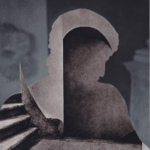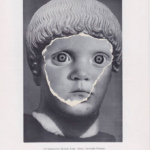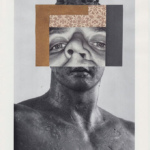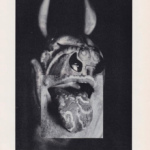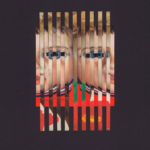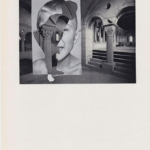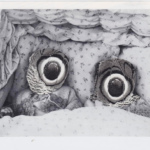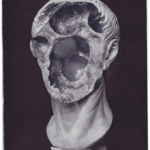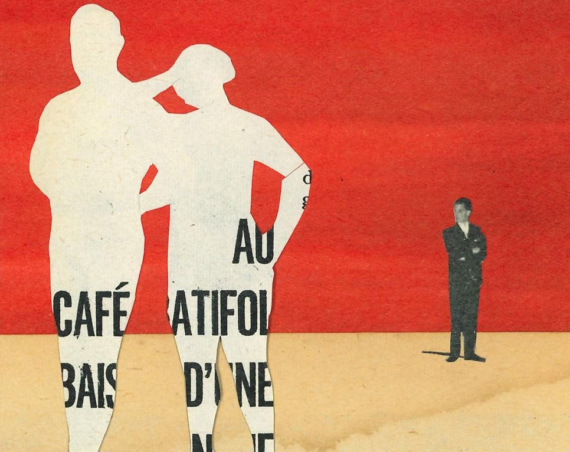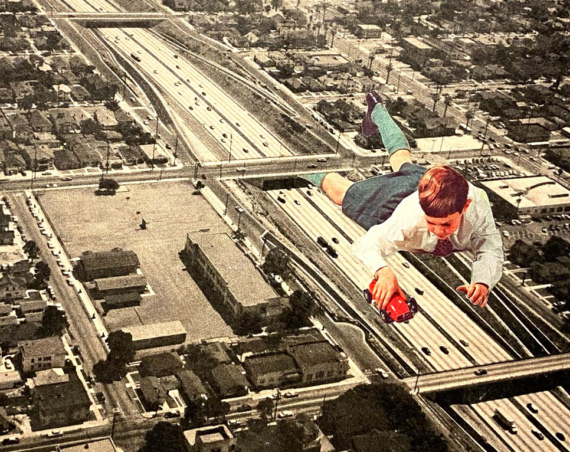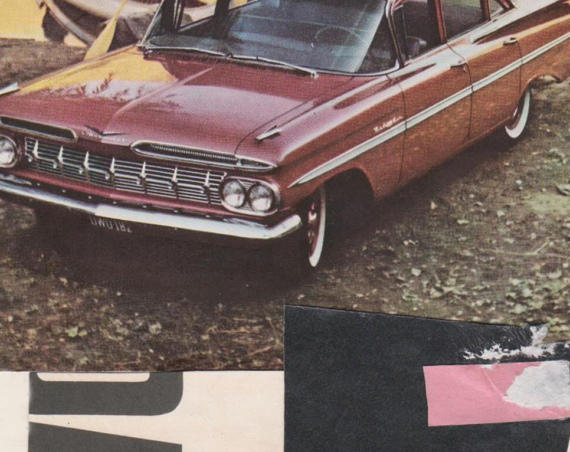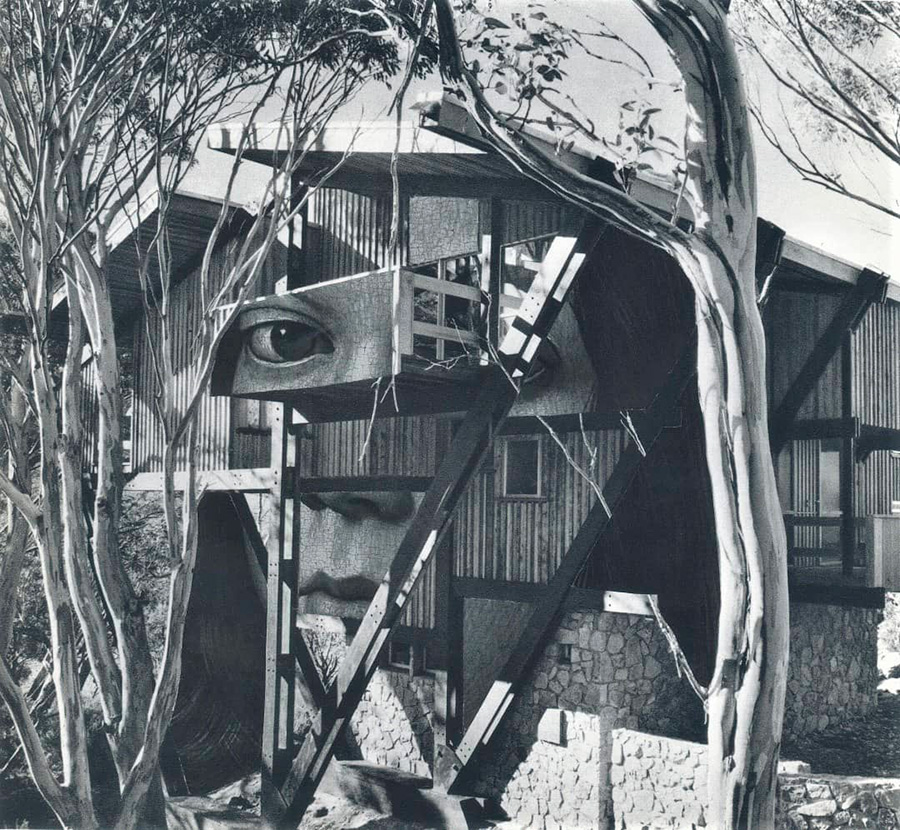
First few basic questions, who are you, what are you doing, where are you coming from?
I am Harri Kalha, collage maker based in Helsinki, Finland. Here I am still chiefly known as a writer, scholar, and curator. But this is gradually changing as I was invited to show my work as part of an exhibition of contemporary art last summer. I’m preparing for a solo show in March 2022. I only began presenting my work online a few months ago.
When and how did you start to do collages?
Collage became my main form of visual expression some 10−15 years ago. I realize now that my mother’s death may have had something to do with it. The urge to make pictures – in the closet, as it were, since I only showed them to a couple of people – was fuelled by overwhelming feelings of loss as well as an ambiguous sense of liberation. It’s like I no longer felt accountable to anyone, with no parents around.
Before that, I had occasionally made smaller collages, mostly in postcard format, as a pastime and to send to friends and family. I also did scholarly work on old postcards and photomontage, so it wasn’t that huge a leap from academia to visual creation. Some have detected even in my books a gradual move to a collage-like visual emphasis.
Why do you do collages?
As a youth I started out as a draughtsman, cherishing precise linearity, the pencil, and the outline. In art school, I loved croquis and drawing the nude. One of my first idols was a painter called Valerio Adami. In retrospect it all makes sense. There is linearity about collage that mirrors my personality. It’s all about the outline, first following it as neatly as possible, and then eventually breaking it, almost like violation or trespassing.
But the real answer to your question is: I do collages because I don’t feel well if I don’t make them. There was a period when my day job as a writer kept me away from making pictures. I certainly loved writing, but there was this whole visual universe inside me that beckoned to come out.
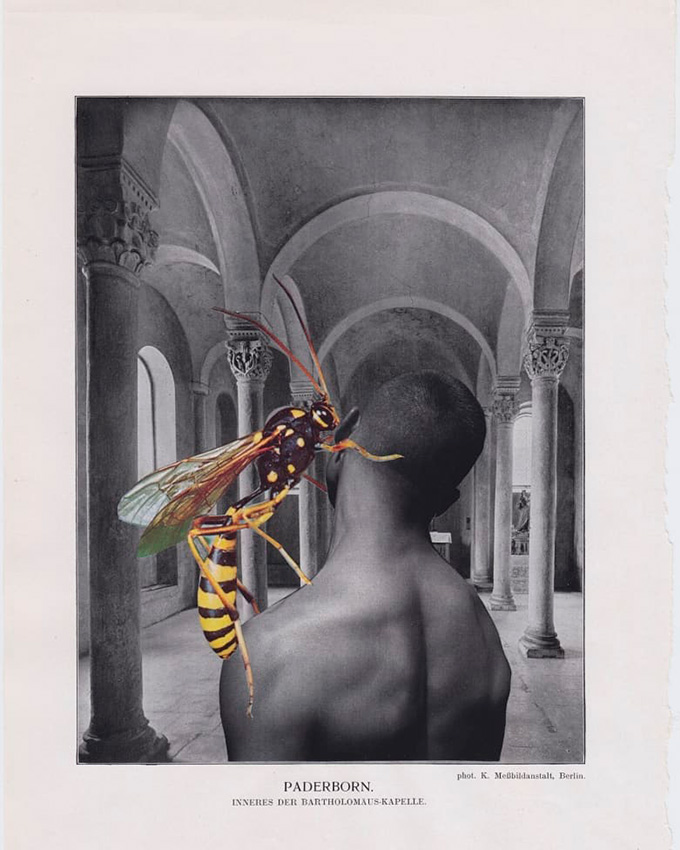
What are the best and worst things in collaging?
The best thing is actually also the worst thing: endless possibility. There are so many different routes you can take with the same papers. Collage is really about decision-making. I have become quite adept at making up my mind!
Still, I think my biggest handicap is the tendency to second-guess, to question the fresh ideas that pop into my head. I admire those artists who just create, in a free-form, expressive manner. I tend to be quite anal and precise. I’m still looking to connect with my subconscious – if such a thing actually exists beneath the intellectual veneer protecting my psyche…
On the other hand, I realize that I should cherish that intellectual control because it’s what makes me ME. It takes different strokes, as the saying goes, and we can’t all be Fred Free! As he himself puts it, ‘Freedom isn’t for everyone!’. I love artists who seem to cut and paste in wild abandon, but that’s not really who I am. Not right now anyway.
“Scissors have a calming effect on me. I think cutting is my form of meditation.”
Can you tell me about your process of making collages? How do you start to work? How do you select the subject?
It all begins with the paper. In my case it’s usually a page from an old book. An image ‘speaks’ to me, beckoning to be combined with another, and so on. Cutting is also an important part of the process. Scissors have a calming effect on me. I think cutting is my form of meditation. It is an intriguing act conceptually, because you are simultaneously breaking and mending. It’s almost like I need to violate the paper in order to heal something within.
I’m not an illustrator, so it’s not really about having or selecting subjects. Subject matter arises from the image, often by way of unexpected association. It may derive logically from the source image, but often it is sparked by an element of surprise. This is where my super-Ego tries to take over saying: ‘That’s silly’ or ‘That’s too simplistic!’. This editing tendency drives me crazy!
In your artworks, what are the most important elements? Do you have certain things that you notice to pay more attention to?
In short: technique and concept. I use a lot of classical hand-cutting techniques and consider them sources of inspiration just like paper or source image. My posthumous mentor Jiří Kolář gave the techniques amusing names: prolage, rollage, froissage, etc. If I happen to run out of ideas (which is rare!), I just turn to any specific technique and see what happens. Something usually does.
I structure my work thematically and serially, paying heed to the conceptual edge that informs my work. I try not to stress intellectual content too much, but it’s unavoidably there. The conceptual attitude may lurk within an ironic stance, or it might be more subtly suggested by the title of a piece. Naming works is important – after all, they are not just abstractions. Making pretty – or quirky or whacky or absurd – pictures is fun, but fun alone won’t make me happy at the end of the day.
On the other hand, I’m a sucker for beauty and think much about composition and harmony. But there is another, equally crucial element, a little harder to put my finger on. Let’s call it a mood or atmosphere. It’s best left to other people to describe and analyze, but I think one ingredient might be wistfulness or melancholia, a sense of longing or loss, relating to the point I made earlier.
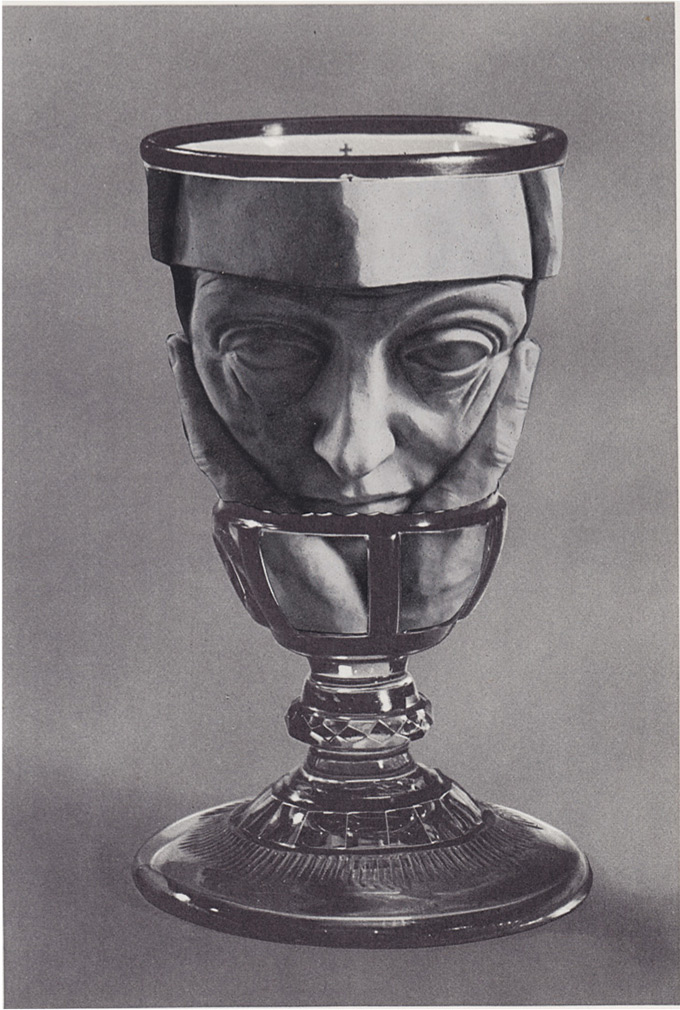
How would you describe your relationship to old paper as a working material?
Paper is everything. Hence I’m not a huge fan of shared sourcing or collage “kits”. They assume our relationship with the material to be superficial. Per se, circulating material that you don’t have use of is great. But the process of discovering a discarded old book with the “blank canvas” of inspiring pages is one of the most exciting things about the process. It’s not just the hunt, but also the sense of suspense as your mind’s eye catches glimpses of works to come…
There is a great deal of ambiguity in all this, of course. You love the paper itself, but you also enjoy cutting it. It’s loving destruction, but destruction all the same. Hence papers should not be too valuable. I obviously love books – I authored several myself – so I wouldn’t touch them unless they are discarded, already falling apart or ruined. Luckily the type of books that most inspire me, nobody seems to want – except other collagists, maybe. My favorite sources have been free books, and I make it a point not to pay more than two euro for a used book when scavenger hunting at flea markets. A 10 euro book probably has antiquarian value for someone, so it is best left untouched.
Black-and-white papers, with all the grainy variations and gradations, are particularly dear to me. Happily enough, since they are the least attractive to most people. Nobody in their right mind wants to own a musty old art history book with no colors in it. Unless of course it is made with 19th-century printing techniques that are valued as such – In which case I wouldn’t touch it.
You can probably deduce from my respect for the paper that digital techniques are foreign to me. I don’t use prints, nor have I made prints of my work. As a theorist, I understand that uniqueness is a cultural myth, but when it comes to old papers, it is an actual value. You can only use them once. I am fascinated by the array of digital illustrations out there, but it represents a very distant aesthetic to me. I take the French term collage literally in that it entails the use of some sort of glue!
It is a reflection of my love for the paper that I have also done ‘found collages’ where I didn’t use glue or alter the source image at all, as well as several works with just one added element. I find myself drawn more and more to simplicity, although I’m aware that such esoteric stuff might not be viewed as art at all. In any case, the “everything and the kitchen sink” school of abundant scraps is not my cup of tea. Ironically, I have given a couple of works that very title! ☺
“If there is a grotesque element, it is because there can be no beauty without ugliness – in life, in art, or in me.”
How do your works reflect your emotions/views?
My works are a complete, albeit imperfect reflection of my personality. My dark or murky tendencies are there, my natural bent for double (or multiple) entendre, my serious playfulness. My yearning for sensuality, my ambivalent experience of the complexities of human interaction, they are all to be found in the works. If there is a grotesque element, it is because there can be no beauty without ugliness – in life, in art, or in me. My views on life and art are very dialectical and fraught with ambiguity.
I take the term view as representing moral attitudes and social or political stances. I don’t think my works subscribe to any particular social agenda. It isn’t art’s task to “better the world”. Art should rather question all agendas – to obstinately complicate views rather than market any specific views.
Still, certain themes that have to do with ideological notions such as good taste and decency, gender, or sexual norms are certainly present. But they are there because of who I am – in a sense, in spite of myself – and not because I am trying to make a public statement. Art is not for illustration or explicit commentary, it entails a much more troubled form of communication.
This said, my latest series (which I haven’t shown anyone!) engages with an environmental subtext that grew out of ponderings on the nature/culture divide that subtends our modern ideologies. But again: let’s not be naive and pretend that art is going to make an ecological difference and save our planet. Let’s instead make sure our politicians and business leaders will!
How do things influence you as an artist? Can you see the influences in your works or has there been a moment that you’ve noticed afterward?
It’s hard to name specific things because visual culture – and life itself – represents such an endless panoply of inspiration. As for visual sources, I tend to navigate to older art, even religious motifs, although I am against institutionalized religion. My love for pottery suggests an investment in tactile values and sensuality. As for collage, I am very much conscious of the tradition that stretches from Dada artists such as Hannah Höch to (post)modernists such as Jiří Kolář but even goes back to earlier, more anonymous experiments in popular postcards and folk photography.
Acknowledging artistic kinship can be tricky. Although I sometimes regret coming to the scene so late, it may actually have been fortuitous. My first lucky strike was, ironically, that I happened to be living in New York when a major Helsinki museum organized a Jiří Kolář exhibition. So I never saw his classic works! Several years later, after I had become more involved in collaging, somebody gave me the catalog and I was blown away. I hadn’t even heard of him. But my point is that I had already discovered intuitively some of his techniques, so I wasn’t completely overwhelmed and intimidated. The discovery at an earlier stage might have had a paralyzing effect. After all: why bother with something when it has already been done to perfection?
The second lucky strike is venturing out to that collage cornucopia called Instagram so late. Had I been exposed earlier to the endless online parade of talent, I might have been discouraged. At this later stage, I am comfortable with what I do and with that specific ingredient which hopefully sets me apart.
The fact is that everything imaginable has already been done and is being done by someone – so the only thing you can do is remain absolutely true to who YOU are and make sure you inject your personality into every piece you make. The technique is just technique, papers are just papers, but it is that individually human element that is bound to set our work apart from others. The thrill, the bliss, the loss, the pain.
If you should describe your art with one word, what would it be?
It’s ‘me’ – well, I hope so anyway. ☺
Harri Kalha around the internet
Instagram: @harri.kalha
Website: harrikalha.webnode.fi

